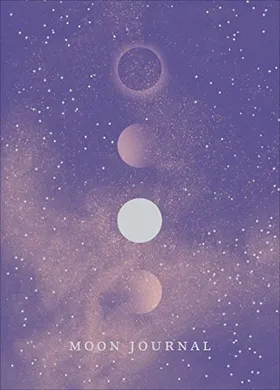April's rare black moon ushers in our eclipse season, and it's time to go big or go home
This new moon is one worth noting, according to astrologers—here's why


A rare black moon might sound alarming, but in fact, the celestial transit will be rather auspicious.
Rounding out our April astrology events, the black moon—the second new moon in one calendar month—coincides with the first solar eclipse of 2022. The astrology-obsessed might shutter a bit when they hear "eclipse," but this happening is going to be packed with good.
"If you are going to start something, now is the time to plant that seed," says Girl and Her Moon astrologer, Noush. "Do that little tiny thing that is going to push you forward through that sliver of opportunity that's coming your way."
We suggest you pour some tea, light a few candles and jot down notes in your journals, great gifts astrology fans love. It's time to soak up the abundance of Pisces energy and think about what you want to do next.
Rare black moon: what's going on
A black moon is essentially when you experience two new moons in one month, like we did this April (we already had an April 2022 new moon on the April 1). It'll take place during Taurus season, which astrologer Liz Simmons says can affect our pocketbook.
"Eclipses have a really fun way of bringing chaos to a new lunar cycle, in particular it affects Taurus themes of security, money and loyalty," she says. "Be extremely cautious with what you’re letting go of, what you’re selling and what you’re buying."
Though it is a time to be cautious, it's also a time to embrace your dreams, as a bunch of planets are in Pisces, and Venus and Jupiter conjunct in Pisces. Ultimately, Noush says that will turn our attention towards expansion and growth.
"Don't let the fears and details bug you down, really look at the bigger picture," she suggests. "This is not about taking leaps and bounds and doing it all at once. It's really about setting that small intention, and as long as you set it forward, you can expect to see it grow gradually over the course of this eclipse cycle, and maybe even beyond."
Solar eclipse explanation
In technical terms, our neighbors at Space.com, defines a solar eclipse as the time in which the moon moves between Earth and the sun, and then casts a shadow over Earth. It can only happen during a new moon when the moon passes directly between the sun and Earth and its shadows fall upon Earth’s surface.
Who will be most affected come April 30?
The eclipse will happen on the fixed signs' axis points (Leo, Aquarius, Taurus and Scorpio). There could be a little shakeup, perhaps even a bit of discomfort, but it's all going to place us on the proper path.
But regardless of signs, it's imperative that we all keep a positive mindset.
"The best way to move through it would be to focus on that Piscine energy," Noush says. "Really embrace that vision and step into the dream you value."
Curious what's happening with the cosmos next? Have a look at your May horoscope and prepare for the return of the backwards spins: Pluto retrograde 2022 and Mercury retrograde 2022 are on their way.

Need a TV show recommendation? Maybe a few decor tips? Danielle, a digital news writer at Future, has you covered. Her work appears throughout the company’s lifestyle brands, including My Imperfect Life, Real Homes, and woman&home. Mainly, her time is spent at My Imperfect Life, where she’s attuned to the latest entertainment trends and dating advice for Gen Z.
Before her time at Future, Danielle was the editor of Time Out New York Kids, where she got to experience the best of the city from the point of view of its littlest residents. Before that, she was a news editor at Elite Daily. Her work has also appeared in Domino, Chowhound, and amNewYork, to name a few.
When Danielle’s not writing, you can find her testing out a new recipe, reading a book (suggestions always welcome), or rearranging the furniture in her apartment…again.



